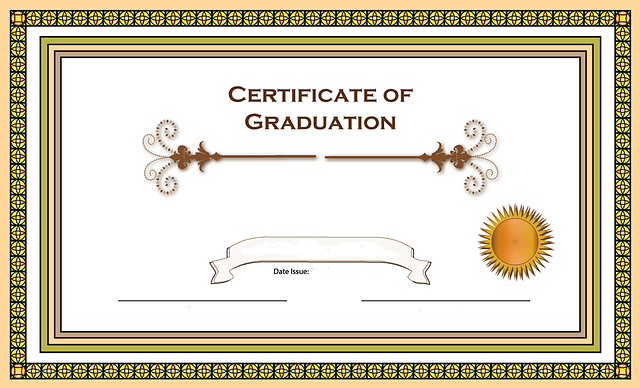Continuing education is an essential part of any profession, especially in fields like physical therapy that require a high level of skill and expertise. Physical therapists and their physical therapist assistants and therapy assistants need to stay up-to-date with the latest treatments, technologies, and best practices if they’re going to serve their patients effectively. But continuing education isn’t just about professional development – it’s also about improving people’s lives! With more knowledge comes greater ability to help others on their journey towards better health and wellbeing.
This article will explore why PT CE is so important for both practitioners and patients alike. We’ll look at what topics are typically covered in professional training programs, as well as the benefits that come from taking part in them. Finally, we’ll discuss how PT’s can make sure they’re staying ahead of the curve when it comes to providing quality care. By understanding these key elements, readers can gain insight into how they can use continuing education to improve their practice and provide excellent service to those who rely on them each day.
Continuing education provides immense value; it helps professionals keep their skills sharp while giving patients access to cutting-edge treatments and therapies. This article will equip readers with valuable information about PT CE so that everyone involved in acute care can benefit from its transformative potential.
Benefits Of CE Courses

Continuing education (CE) courses are essential for PT’s who want to stay abreast of the latest advances in their field. CE courses offer rewards and advantages that can help PT professionals further their careers, earn more and enhance patient care.
CE courses provide numerous benefits, such as offering new knowledge on current best practices, giving practitioners access to research-based, evidence based,, providing opportunities to network with other clinicians, and allowing them to hone existing skills while learning new ones. By taking a CE course, PT’s can expand their understanding of various treatment approaches, update techniques they already use, and gain insight into ways they might be able to improve services offered to patients. Moreover, many professional certifications require continuing education credits in order to remain valid; completing CE courses is necessary for these renewal requirements.
When it comes time to choose your next CE course, there are several factors worth considering.
How To Choose Your Next Ce Course?

Choosing your next continuing education (CE) course can be a daunting task. With so many available options, it’s important to do some research and understand the benefits of these courses for physical therapy certification and master’s degree requirements. If you’re looking for online learning resources, there are plenty of websites, blogs, and social media groups dedicated to helping healthcare professionals select a CE course that is right for them.
When deciding on which CE course to take, consider factors such as: prerequisites needed; cost; whether or not the course fulfills certain professional development goals; how long the class will last; and if any special equipment is needed before enrolling in the program. It’s also helpful to read reviews from past students who have taken similar classes. This way, you’ll be able to get an idea of what others thought about their experience with the particular CE provider. Also make sure to check out any discounts or promos being offered by various providers in order to save money when selecting your next CE course!
Once you’ve narrowed down your list of potential courses based on criteria outlined above, look into the types of courses available within each area of study – from webinars and live lectures to virtual workshops and self-paced independent studies – so you can find one that best fits your needs. Doing this kind of research ahead of time ensures that you’re making an informed decision about taking a CE course that helps further develop your skillset while meeting all necessary educational requirements.
Types Of Courses Available
Do you want to stay up-to-date in the rapidly evolving field of physical therapy? There are a variety of types of continuing education courses available that can help you do just that!
*Specialty Courses: The TrapEAZE Technique® CE course offers a way to become a specialist in upper back pain.
*Body Mechanics Courses: Learn about corrective exercise, postural analysis and assessment, and neuromuscular reeducation. Understand how body mechanics impact musculoskeletal health and performance.
* Manual Therapy Courses: Gain knowledge on mobilization techniques, joint manipulation, soft tissue mobilization, therapeutic massage, myofascial release and more. Discover skillful application of manual methods for treating different conditions.
* Acupressure Courses: Study the concepts of Chinese medicine while learning acupressure points associated with various systems of the body. Develop skills to use pressure techniques safely and effectively for pain relief and management.
* Therapeutic Exercise Courses: Learn effective program design principles for creating individualized plans for patients. Understand how exercises can be used as part of an intervention plan for injury prevention or recovery from illness or injury.
Continuing education is essential when it comes to staying abreast of best practices in physical therapy – so why not get certified today? Let’s explore what qualifications must be met and what approval process is required next!
Qualifications And Approval Process

For PT’s seeking to stay abreast of the latest developments in their field, continuing education (CE) courses can provide a wealth of information. The qualifications and approval process for these types of courses are important considerations when it comes to obtaining CE credits.
The most common qualification is having a master’s degree in PT or another related area. It is also necessary that applicants have passed the National Physical Therapy Examination (NPTE). In some states, additional certifications may be required depending on the type of course being taken. All relevant documentation must be submitted with applications prior to enrolling in any CE course.
Once an individual has all the necessary credentials, they can submit an application form along with proof of their qualifications to the appropriate board for approval. Once approved, the applicant will receive written confirmation from the board confirming their acceptance into a particular CE program or course. This document should then be kept as evidence of successful completion upon finishing the coursework.
With so many easy online learning options from recorded webinars to live webinars available nowadays, physical therapists can easily keep up-to-date on changes and advancements in their field without committing too much time away from work and other life obligations. Moving forward, exploring different opportunities for furthering one’s professional development is key for staying ahead in this ever-evolving profession.
Easy Online Learning Options

PT continuing education has become more accessible than ever with the rise of online learning options. With easy access to hundreds of CE courses, you can learn at your own pace and in your free time. You’ll have a variety of learning options available that include webinars, podcasts, videos, articles and self-paced modules.
These resources are designed to provide physical therapists with cutting edge knowledge on patient care best practices while saving them both money and valuable time. Online classes also allow professionals to work independently without having to attend traditional classroom sessions or workshops. All these benefits make studying for your continuing education credits much more efficient and cost effective.
With such an array of online CE opportunities, finding quality instruction is now easier than ever before so that you can stay up-to-date on advances in the field of PT. Moving forward into the subsequent section about master’s degrees in PT, it’s important to remember there are many educational paths from which one may choose when seeking higher levels of expertise in this field.
Continuing Education Providers
Continuing education providers offer a variety of options for professional development and expansion. From traditional continuing education courses to online CE program providers, the list of available CE providers is extensive. Depending on your needs, you can select from an array of certified course providers or look into licensing requirements in order to get accredited by a specific organization. Additionally, there are many quality CE provider options that provide materials and resources needed to complete a continuing education requirement or expand one’s knowledge base related to physical therapy practices.
These various CE provider offerings make it possible for professionals in any field to find ways to grow their skills while maintaining their certification status. With so many different professional development providers out there, it pays to research what each offers and make sure they meet all necessary requirements before committing. This ensures that individuals receive the best value for their investment as well as the highest quality learning experience possible. As we move forward into exploring more about professional development opportunities, take time now to explore which continuing education provider is right for you!
Professional Development Opportunities
The journey of professional development never stops, and physical therapists have a range of opportunities to maintain their knowledge base. From career development programs to continuing education courses, there are numerous ways for physical therapy professionals to stay sharp and make strides in the field.
For those looking to expand their skillsets beyond traditional clinical experience, seminars offer an excellent way to explore new topics related to physical therapy practice. These seminars allow practitioners to hone in on specific aspects of their profession as well as discuss real-world issues with other experts in the hand therapy industry. Furthermore, these events can open up networking opportunities or provide insight into potential job openings that might not be available through regular channels.
| Professional Development Opportunities | Cost Considerations |
|:——————————- | :—————————|
|Professional Development Courses |Course Fees |
|Professional Development Seminars |Travel Expenses |
|Career Development Programs |Subscription Services |
|Continuing Education Programs |Assessment Costs |
No matter which route is chosen for professional growth, it’s important to consider all associated costs before jumping in headfirst. Whether tuition fees are involved or subscription services require payment each month, having a firm understanding of what comes along with pursuing certain professional paths will prove beneficial down the line. With this information at hand, one can confidently move forward towards realizing their full potential within the world of physical therapy. With cost considerations now on the horizon, let’s take a look at how budgetary constraints play into educational decisions moving forward.
Cost Considerations

When exploring PT CE, cost and schedule considerations are an important factor. There is a wide range of fee structures depending on the program and institution offering it.
The fees structure can include:
* Payment plans:
* Paying in full upfront
* Splitting payments installments over time
* Financial aid or funding options to cover course costs from external sources such as scholarships or grants
It’s essential to research all available payment options and understand what financial commitments may be required for each option. Some programs may offer discounts for paying in full, so keep that in mind too. Additionally, many courses provide information about their respective pricing policies for students during the application stage. It’s recommended to contact the institution directly to inquire about any additional details necessary when making decisions based on finances.
With thorough understanding of the cost implications associated with physical therapy continuing education comes peace of mind knowing you have made the right decision while still staying within budget. This transition leads us into discussing certification programs which allow PTs to further specialize their knowledge and skillsets.
Certification Programs

Certification programs are like a key that unlocks the door to professional achievement in physical therapy. Through these programs, PT’s can obtain credentials needed to maximize their career potential and advance in the field of physiotherapy. Certification programs provide an array of resources for professionals who want to expand their knowledge base and increase their marketability within the industry. These include courses on specific topics such as anatomy or biomechanics, hands-on clinical training, and examinations designed to test one’s ability to apply theoretical concepts into real world scenarios. With successful completion of certification exams, physical therapists can gain recognition from colleagues and employers alike.
Clearly, taking advantage of certification programs is essential for any health professional looking to stay current with changing trends in the industry while also achieving greater levels of success professionally. Additionally, it offers a reliable path towards credentialing and enhanced opportunities for leadership roles down the road. To ensure continued growth and development as a PT, investing in certification programs should be part of every healthcare provider’s plan – no matter what stage they may find themselves at in their careers. Moving forward then, let us explore some important resources available to PT’s today so they can continue on this journey with confidence.
Resources For Physical Therapists

PT’s have a wealth of resources available to help them stay up-to-date on the latest treatments and techniques. Continuing education courses, CE certification programs, and physical therapy education are all great ways for PT’s to enhance their knowledge base.
With so many options out there, it can be tricky to find the best resource that meets your individual needs as a professional. Fortunately, many organizations offer comprehensive information about various continuing education opportunities as well as specialized resources tailored specifically for physical therapists. These include online learning platforms, webinars, conferences, workshops and other forms of professional development activities. By taking advantage of these valuable tools you will gain an in depth understanding of current trends in the field and develop new skills that will benefit both you and your patients.
The next section will cover associations and events which provide excellent networking opportunities for those interested in advancing their careers in PT.
Associations And Events
Professional associations and events provide physical therapists with the opportunity to stay abreast of the latest techniques, research, trends, and education opportunities. Attending conferences, seminars, workshops, or other educational gatherings provides a great way for PTs to learn from their peers in person.
|Organization|Event Type|Location/Date Info|
|:—:|:—:|:—:|
APTA | Annual Conference | Washington D.C., June 2021
American Physical Therapy Association (APTA) | State Conferences | Varies by state
Sports Physical Therapists Section (SPTS) | Annual Symposium | Chicago, IL October 2021
World Confederation For Physical Therapy (WCPT) | World Congress of Physiotherapy | Less Pain More Gain, LLC’s TrapEAZE Technique® Specialization Course | Virtual Event April 2022
These organizations offer memberships that grant access to exclusive resources like online communities and discussion forums as well as discounts on event attendance fees. Joining one of these professional organizations can provide physical therapists with valuable networking connections throughout their careers. Additionally, attending events is an excellent way for PTs to expand their knowledge base while also helping them stay up-to-date with recent developments within the field. This alternate CE course allows practitioners to specialize in TrapEAZE Technique® which can be beneficial when offering services involving aerial arts or circus performance medicine.
TrapEAZE Technique® Specialize With This Alternate CE Course

Coincidentally, physical therapy continuing education is not just about associations and events. The TrapEAZE Technique® provides an opportunity to expand your knowledge in a way that can benefit you greatly. It offers a hands-on approach to learning, allowing physical therapists to specialize in this trapping technique while earning a completion certificate or even certification.
Developed by Dr. Justin Mandel, DOM, the course focuses on mastering its four-step upper back pain system, which are used for both diagnosis and treatment. Through highly focused online training and through a live online patient examination and treatment to get your completion certificate, participants will gain invaluable insights into pain science and how they can effectively use these techniques in their own practice. The goal is to provide practitioners with tools that enable them to help patients achieve drastically improved pain relief without sacrificing safety or mobility.
This alternate CE course has been carefully designed for professionals looking to further their skillset so they can better serve their patients. As such, it’s sure to be worth every minute spent completing it!
Frequently Asked Questions

How Often Should I Take Continuing Education Courses?
It’s important to stay up-to-date on your continuing education (CE) requirements. But how often should you take CE courses? When it comes to renewing CE credits, the frequency of coursework can vary depending on state licensing boards and professional organizations.
When considering a PT CE program, look into what is required by your board or organization. In general, most professionals will need to take 15 hours per year for licensure renewal. This may include some combination of webinars, lectures, seminars, workshops, online modules, self-paced learning activities and more. Professionals who are just starting out may be asked to complete additional CE credits in their fields within the first few years after initial licensure has been granted.
By researching and understanding current CE course frequency regulations, PT’s can ensure they meet all necessary requirements while also taking advantage of educational opportunities that help them advance their knowledge base and serve their clients better.
Are Continuing Courses Mandatory For PT’s?
As a physical therapist, the importance of continuing education (CE) is not to be overlooked. With new advances in science and technology, it’s essential for professionals like us to stay ahead of the curve—but are CE courses mandatory?
The answer lies in understanding the regulations surrounding physical therapy CE requirements. In most cases, physio CE courses are necessary if you’re looking to maintain your license and credentials. Depending on where you live, there may even be specific prerequisites or criteria that must be met before taking a course. Not meeting these criteria could result in facing disciplinary action or having to retake certain classes.
That said, many states have adopted “grandfathering” clauses which allow established professionals to avoid taking some types of physio CE courses until they renew their licenses. Additionally, most states require therapists to take a certain number of credit hours each year as part of their continuing education requirements. This can range from 10-30 hours depending on the state and profession so it’s important to check with local laws when planning out your CE program.
In short, staying up-to-date with physical therapy continuing education is incredibly important for any professional working in this field–and yes, attending courses may very well be mandatory too! To ensure compliance with licensing standards and make sure we’re doing our best work for clients, it’s critical that we stay informed about all relevant rules and regulations governing continuing education requirements.
Can I Transfer Credits From One Ce Course To Another?
As a PT, transferring credits from one continuing education (CE) course to another is an important factor in staying up-to-date with your professional development. In order for you to be able to transfer the credits earned from attending CE courses, there are certain rules that must be followed. Not only do these regulations differ between countries, but also within different states and cities.
Below is a list of things to consider when looking into transferring done CE course credits:
– Understand the requirements for credit transfers
– Research what types of CE courses offer transferable credits
– Compare any differences in credit hour requirements between various organizations or institutions
– Look into how long the process takes and if additional documents are required
Whether you’re taking a course abroad or at home, understanding all the details of transferring credits can help you achieve success in your career. It’s especially helpful in cases where it may not be possible to attend every single class due to work commitments or other factors. With careful research and planning, physical therapists everywhere can stay informed on current best practices while still meeting their obligations.
What Types Of CE Courses Are Available For Free?
Continuing education is a great way to stay current on the latest trends and developments in your field. But one thing that can be discouraging when it comes to continuing education (CE) courses is their cost. Fortunately, there are many CE courses available for free online. Free CE courses provide the same quality of content as paid ones, but without any financial burden.
For those looking for physical therapy-related CE courses, there are plenty of options out there. From free physical therapist assistant and therapy courses to free physical therapy CE courses, you’ll find something that meets your needs. Many of these courses offer activities such as quizzes or assessments so that learners can track their progress and gain real knowledge from taking them. Furthermore, all of these free ce course offerings give professionals access to educational content whenever they need it — at no extra cost!
Regardless of whether you want to brush up on existing skills or acquire new ones, completing an online CE course can help you reach your goals while also providing valuable resources without breaking the bank. With so much reliable information easily accessible via the internet, now more than ever is a great time to take advantage of these types of learning opportunities and become certified or enhance your expertise in whatever area appeals most to you!
Are CE Courses Valid In Other Countries?
Are CE courses valid in other countries? This is an important question to consider, especially when engaging in international physical therapy. Many times, the answer depends on the country’s specific requirements for recognition and transferability of continuing education (CE) credits.
CE course validity varies from one country to another, which means it’s essential to do your research before committing to a CE course abroad. Here are some key points to consider:
* Check with your respective governing body regarding their cross-country CE course acceptance policy
* Understand what documents or proof may be required for CE credit transferability abroad
* Research the requirements necessary for CE course recognition internationally
Doing this research ahead of time can help ensure that you receive credit for any continuing education courses taken outside of your native country. It also helps to give peace of mind knowing that you have met all the necessary requirements prior to participating in international CE activities. Taking these steps ensures that your hard work pays off and your efforts will not go unrecognized or unacknowledged.
Conclusion
Continuing education is a vital part of the physical therapy profession. It’s important to understand how often you should take CE courses, whether or not they’re mandatory for PTs, if credits can be transferred from one course to another and what types are available for free. Additionally, it’s worth considering if these courses are valid in other countries.
Overall, continuing education plays an integral role in helping physical therapists stay up-to-date on the latest treatments and therapies so that they can provide their patients with the best care possible. Taking CE courses regularly can help ensure that your knowledge remains sharp as a tack – like cutting through butter! As long as I’m staying abreast of new research and developments within the field and continually learning more about my craft, I’ll always be ready to give my patients the highest level of service that I possibly can.
Ultimately, continuing education is essential for any physical therapist who wants to remain competitive and knowledgeable in today’s fast-paced healthcare industry. Not only does it keep me informed but also ensures I’m providing superior services each time I step into a therapy room. With regular CE updates, I’m confident that I can continue providing excellent patient care while furthering my career goals at the same time.
Legal Disclaimer
The information provided on this blog is intended for educational purposes only and is not intended to replace the advice of your healthcare provider. The authors and publishers of this blog are not responsible for any damage, injury, or loss resulting from the use of the information contained herein.
The information provided on this blog is not intended to diagnose, treat, cure, or prevent any disease. Always seek the advice of a healthcare professional before starting any new treatment or changing any existing treatment.
The authors and publishers of this blog are not liable for any direct, indirect, incidental, consequential, or punitive damages arising from the use or misuse of the information contained herein.
The authors and publishers of this blog make no representations or warranties of any kind, express or implied, about the completeness, accuracy, reliability, suitability, or availability with respect to the information, products, services, or related graphics contained on this blog for any purpose.
Any reliance you place on such information is therefore strictly at your own risk. In no event will the authors and publishers of this blog be liable for any loss or damage including without limitation, indirect or consequential loss or damage, or any loss or damage whatsoever arising from loss of data or profits arising out of, or in connection with, the use of this blog.
Through this blog, you are able to link to other websites which are not under the control of the authors and publishers of this blog. We have no control over the nature, content, and availability of those sites. The inclusion of any links does not necessarily imply a recommendation or endorse the views expressed within them.
Every effort is made to keep the blog up and running smoothly. However, the authors and publishers of this blog take no responsibility for, and will not be liable for, the blog being temporarily unavailable due to technical issues beyond our control.
This legal disclaimer is governed by the laws of the State of Florida and any applicable federal laws of the United States. Any dispute arising out of or in connection with this legal disclaimer shall be resolved through arbitration in accordance with the rules of the American Arbitration Association, and judgment upon the award rendered by the arbitrator(s) may be entered in any court having jurisdiction thereof.

